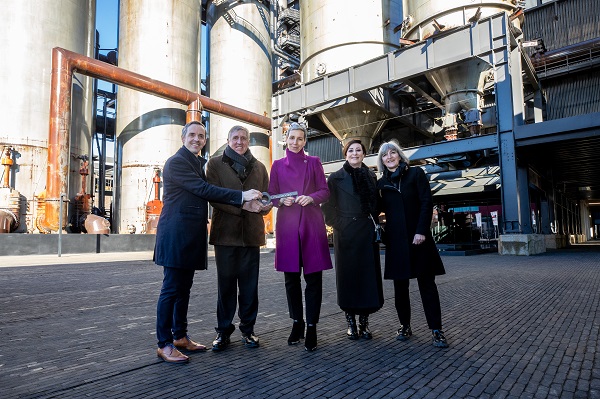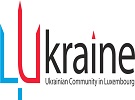 L-R: Georges Mischo, Esch-sur-Alzette Mayor, Esch2022 asbl president; François Bausch, Deputy PM; Sam Tanson, Culture Minister; Daniela Di Santo, Fonds Belval Director; Nancy Braun, Esch2022 General Director;
Credit: Fonds Belval
L-R: Georges Mischo, Esch-sur-Alzette Mayor, Esch2022 asbl president; François Bausch, Deputy PM; Sam Tanson, Culture Minister; Daniela Di Santo, Fonds Belval Director; Nancy Braun, Esch2022 General Director;
Credit: Fonds Belval
On Thursday 9 February 2022, Luxembourg's Deputy Prime Minister and Minister for Mobility and Public Works, François Bausch, and the Minister of Culture, Sam Tanson, visited the restored "Möllerei" and "Massenoire" buildings in Esch-Belval for a symbolic key handover ahead of the Esch2022 - European Capital of Culture programme.
The Möllerei and Massenoire buildings are part of the infrastructures and developments carried out for Esch2022. The places selected for this project are mainly located on the terrace of the blast furnaces which brings together several spaces, contemporary buildings and elements of industrial heritage. The Möllerei and Massenoire buildings form part of the latter, as they forge a link between the past, present and future by exploring the themes of art, technology, science and society through four exhibitions.
Möllerei
Built in 1910, the Möllerei was used to store ore and coke. It underwent a profound transformation between 1965 and 1970. It has not been in service since the shutdown of the last blast furnace in 1997 and has been listed since 2000 in the supplementary inventory of national monuments.
Following the conservation scenario of "monuments in the city", adopted in 2005 for the conservation and enhancement of the blast furnaces, the first eight spans have been preserved, including seven with their silos and their equipment in order to document the functioning of Blast Furnace A.
The northern part of the structure has been emptied of its equipment in order to accommodate the library of the University of Luxembourg, the Luxembourg Learning Centre (LLC), which was inaugurated in September 2018.
The Möllerei will now host the flagship event of Esch2022, the "Digital Spaces" project, and will allow the following functions to be realised:
- Exhibit: the exhibitions of the Digital Space are not carried out according to the classic methods but rather as a result of a whole digital structure (projectors, LED screens, different light installations);
- Experiment and invent: the Digital Space also aims to encourage creation;
- Represent: music, theatre and performing arts. With its transmedia vocation, the Digital Space is the incubator of new cultural forms, a "remix" of classic genres;
- Educate: the Digital Space will serve as a new source of information and education.
The architectural approach was based on two main principles of intervention: on the one hand, the conservation of the building, its structure and its equipment and on the other hand, specific developments, clearly identifiable as new approved contemporary elements approved by the National Sites and Monuments Service (Service des sites et monuments nationaux - SSMN).
Massenoire
The Massenoire building belongs to the industrial remains of the site. Commissioned in 1965, it once housed various pieces of equipment used to manufacture the mass for plugging the taphole of the blast furnace, called black mass. On its lateral extension, the hall has a covered part on the outside which served as a shelter for cast iron ladle dryers.
Up until now, the building has been upgraded and reassigned to the function of information, exhibition and reception and a departure point for visits to the Cité des Sciences, de la Recherche et de l'Innovation (science, research and innovation pole) as well as the blast furnaces in Esch-Belval. For the cultural year, the building has been emptied and refurbished as an adaptable and multifunctional space to meet the needs of the cultural activities and events of Esch2022.
The Massenoire has undergone few changes; the space still contains silos and an overhead crane that have been preserved.








